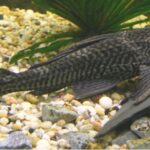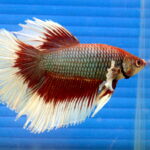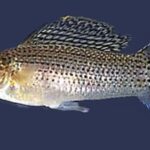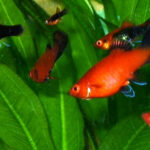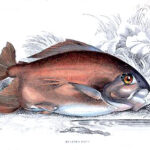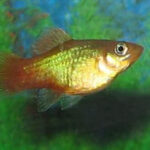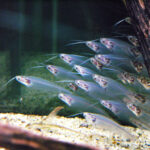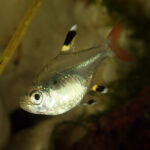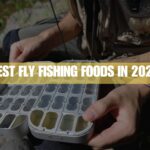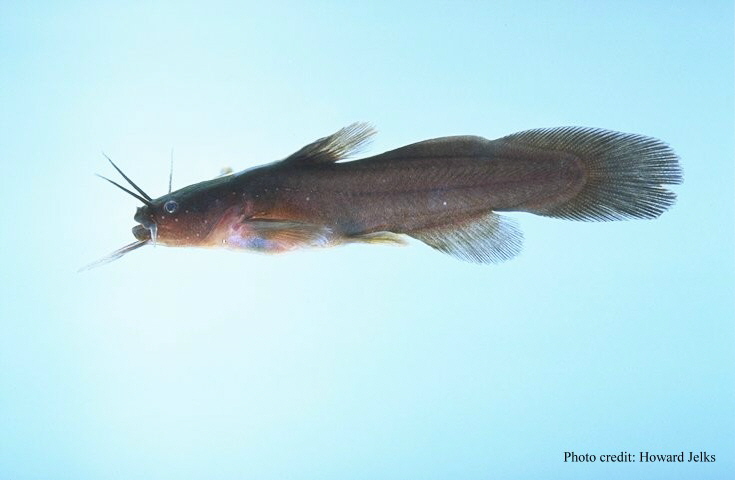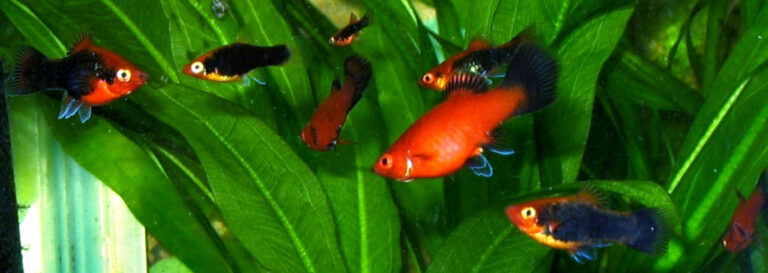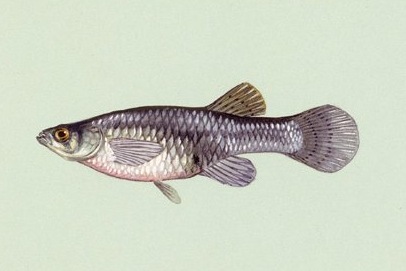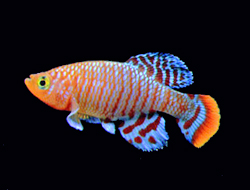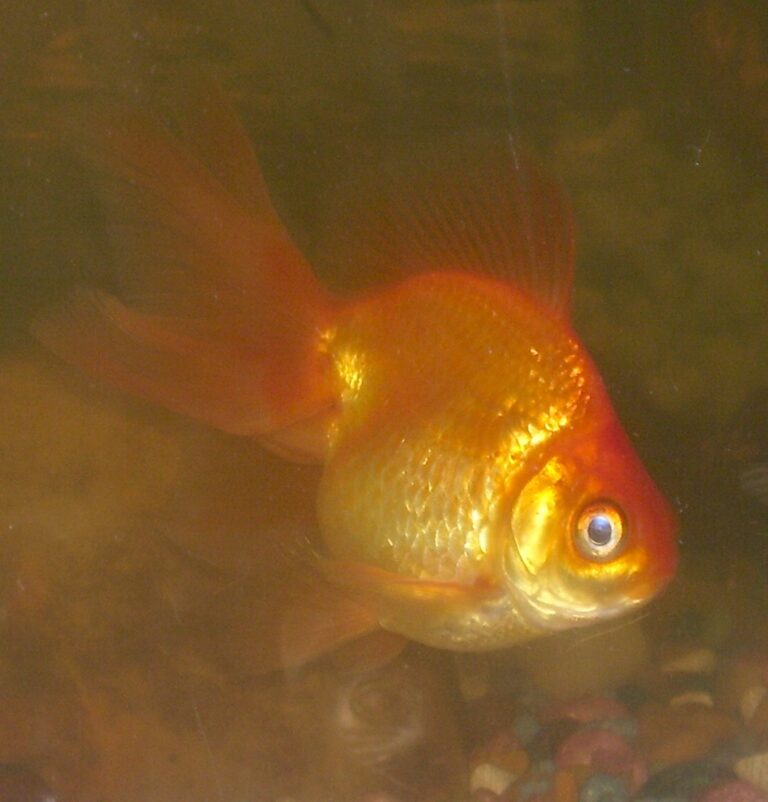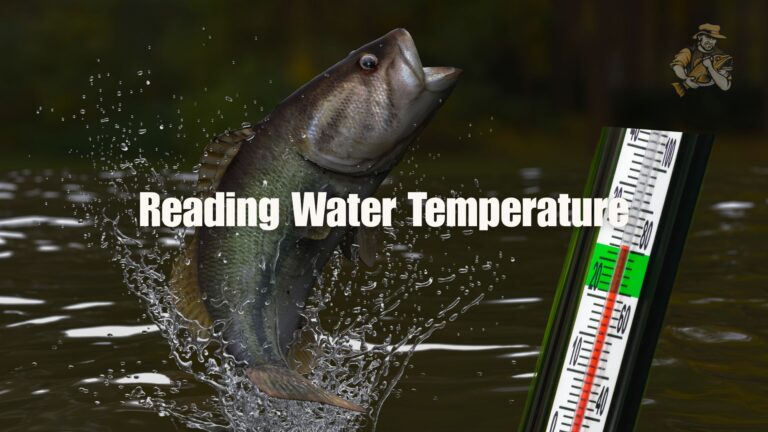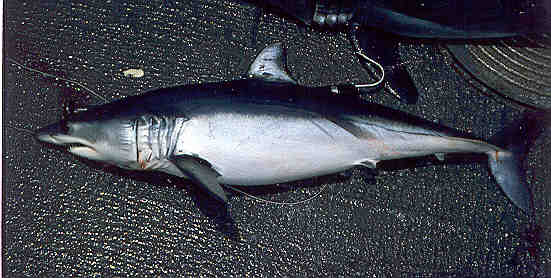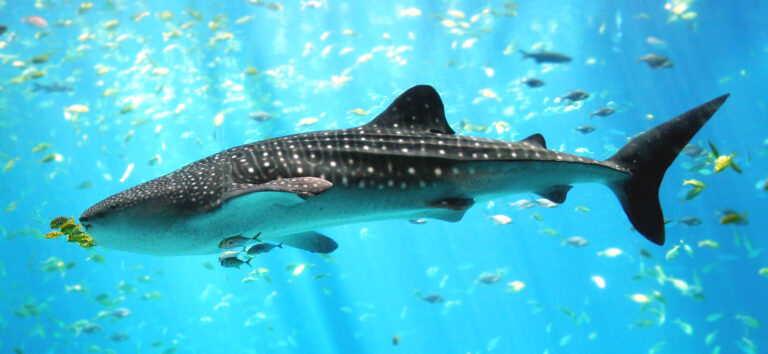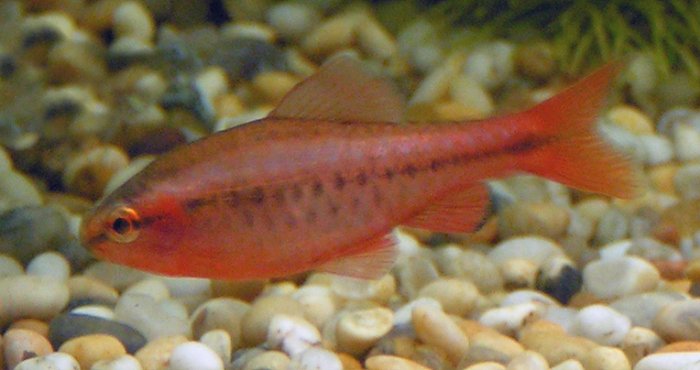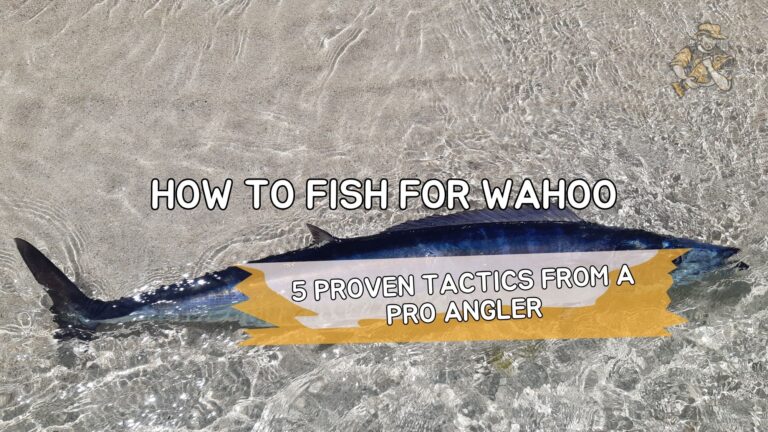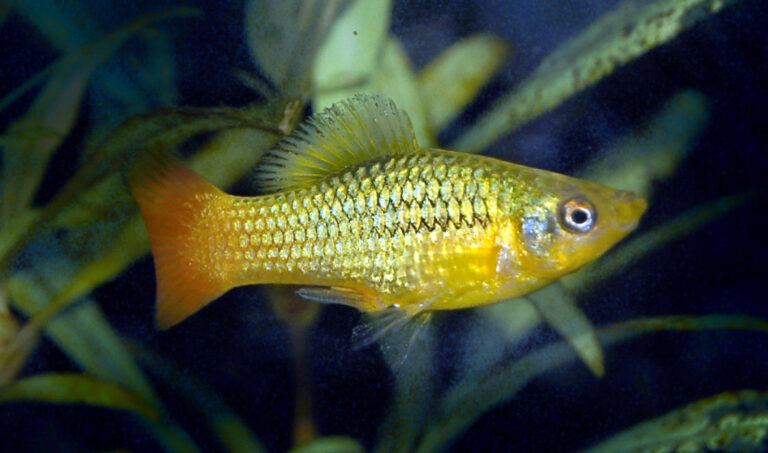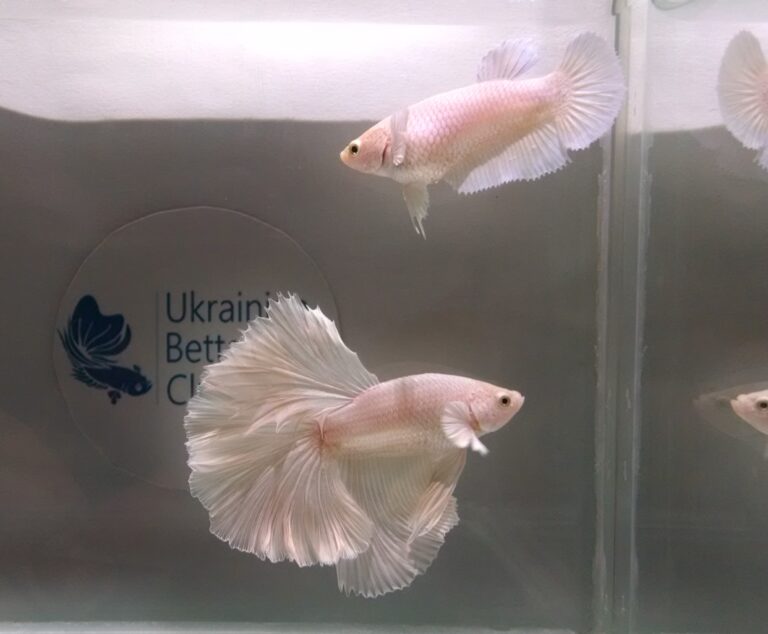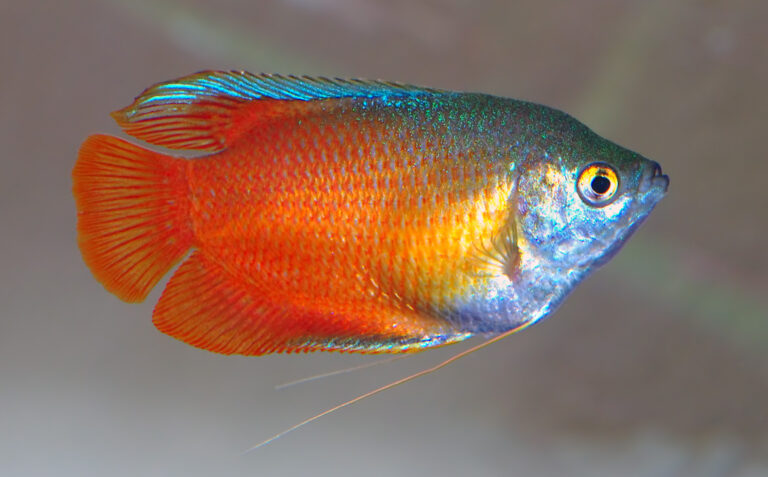Comet Goldfish
By Ryan Maron | Last Modified: June 15, 2025
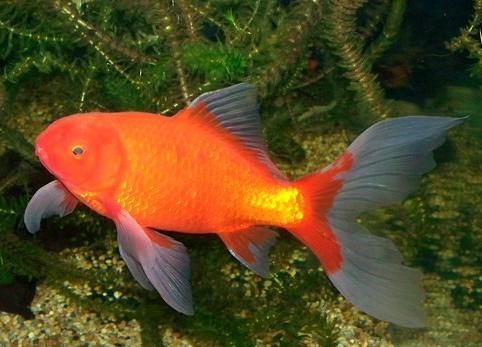
The Comet Goldfish (Carassius auratus) stands as one of the most recognizable and widely distributed freshwater fish species in the world. This hardy ornamental fish represents a selectively bred variety of the common goldfish, distinguished by its elongated body shape and distinctive flowing tail fin. Originally developed in the United States during the late 19th century, the Comet Goldfish has become a cornerstone species in both ornamental pond keeping and aquarium hobbyist communities worldwide.
The ecological significance of Comet Goldfish extends beyond their ornamental value, as escaped or released individuals have established naturalized populations in various freshwater ecosystems. These adaptable fish demonstrate remarkable resilience across diverse environmental conditions, from decorative garden ponds to large natural water bodies. Their omnivorous feeding behavior and rapid reproductive capacity have enabled them to colonize new habitats successfully, though this adaptability has also raised conservation concerns in certain regions where they may compete with native species for resources.
| Feature | Details |
| Common Name | Comet Goldfish |
| Scientific Name | Carassius auratus |
| Family | Cyprinidae |
| Typical Size | 15-30 cm (6-12 inches), 100-500 grams |
| Habitat | Freshwater ponds, lakes, slow-moving streams |
| Diet | Omnivorous – plants, insects, small invertebrates |
| Distribution | Global – introduced worldwide |
| Conservation Status | Least Concern |
Taxonomy & Classification
The Comet Goldfish belongs to the family Cyprinidae, commonly known as the carp family, which represents one of the largest families of freshwater fish globally. Within this extensive taxonomic group, Carassius auratus shares evolutionary ancestry with various carp species, including the closely related Prussian carp (Carassius gibelio) and the more distantly related common carp (Cyprinus carpio). The species classification places it within the order Cypriniformes, which encompasses over 4,000 species of freshwater fish characterized by their pharyngeal teeth and absence of true stomach.
The taxonomic designation of Carassius auratus was first established by Carl Linnaeus in 1758, making it one of the earliest scientifically described ornamental fish species. Modern genetic analysis has revealed that domestic goldfish varieties, including the Comet Goldfish, derive from wild crucian carp populations originally native to East Asia. The selective breeding processes that created the Comet variety occurred primarily in the United States during the 1880s, distinguishing it from the rounder, more compact body forms of traditional goldfish varieties.
Phylogenetic studies indicate that the goldfish lineage diverged from its wild ancestors approximately 1,000 years ago through intensive selective breeding in China. The subsequent development of distinct varieties like the Comet Goldfish represents continued human-mediated evolution, resulting in morphological characteristics that would be unlikely to persist in natural populations. These breeding programs have created numerous recognized strains within the species, each maintaining the fundamental genetic framework of Carassius auratus while expressing unique phenotypic traits.
Physical Description
The Comet Goldfish exhibits a streamlined, torpedo-shaped body profile that distinguishes it from the more rounded common goldfish varieties. Adult specimens typically measure between 15 to 30 centimeters in total length, with exceptional individuals in optimal conditions reaching up to 35 centimeters. The body weight ranges from 100 to 500 grams, depending on environmental conditions, age, and nutritional status. The species maintains a laterally compressed body structure optimized for efficient swimming in both still and flowing water environments.
The most distinctive feature of the Comet Goldfish is its elongated, deeply forked caudal fin, which often extends to lengths equal to or exceeding the body length. This flowing tail fin, combined with extended dorsal and anal fins, creates the characteristic appearance that inspired the common name. The fin rays are typically well-developed and flexible, allowing for precise maneuverability during swimming and feeding activities. The pectoral and pelvic fins are proportionally smaller but maintain the same elongated characteristics seen in the other fin structures.
Coloration in Comet Goldfish varies significantly, with the most common varieties displaying bright orange, red, or yellow pigmentation. However, selective breeding has produced specimens exhibiting white, black, calico, and bi-colored patterns. The metallic scales reflect light efficiently, creating the brilliant appearance prized by aquarists and pond keepers. Some individuals develop a matte or nacreous scale pattern that produces a more subdued, pearl-like appearance. The intensity of coloration can fluctuate based on environmental factors including water temperature, diet composition, and light exposure.
The head structure features a moderately pointed snout with a terminal mouth position adapted for surface and mid-water feeding. The eyes are proportionally large and positioned laterally, providing excellent peripheral vision for predator detection and prey location. The gill covers are smooth and streamlined, while the lateral line system extends along the body length, enabling detection of water movement and pressure changes in the surrounding environment.
Habitat & Distribution
The natural distribution of Comet Goldfish reflects their origin as domesticated variants of wild crucian carp from East Asian freshwater systems. However, through human introduction and subsequent naturalization, these fish now inhabit freshwater environments across North America, Europe, Australia, and numerous other regions worldwide. Their remarkable adaptability has enabled successful colonization of diverse aquatic habitats ranging from small decorative ponds to large natural lake systems.
Comet Goldfish demonstrate preference for slow-moving or still freshwater environments with abundant vegetation and soft substrate materials. These conditions provide optimal foraging opportunities and spawning habitat while offering protection from predators and environmental stressors. Water temperatures between 18 to 22 degrees Celsius represent ideal conditions, though the species tolerates a much broader range from near-freezing to 35 degrees Celsius during short-term exposure periods.
The species exhibits remarkable tolerance for varying water quality parameters, surviving in systems with pH levels ranging from 6.5 to 8.5 and dissolved oxygen concentrations as low as 3 parts per million. This physiological flexibility has contributed to their success as invasive species in various ecosystems where native fish populations may struggle with environmental fluctuations. Established populations now exist in the Great Lakes region, numerous river systems throughout the United States, and various European waterways where they were initially introduced as ornamental species.
Habitat preferences include areas with dense aquatic vegetation, fallen logs, and other structural elements that provide shelter and foraging opportunities. The species typically occupies depths ranging from surface waters to approximately 3 meters, rarely venturing into deeper zones except during extreme weather conditions. Seasonal migrations occur in larger water bodies, with individuals moving to deeper areas during winter months and returning to shallow zones for feeding and reproduction during warmer periods.
Diet & Feeding Behavior
The Comet Goldfish exhibits omnivorous feeding behavior characterized by opportunistic consumption of both plant and animal matter. Their diet composition varies seasonally and geographically, reflecting the availability of different food sources within their inhabited ecosystems. During spring and summer months, individuals consume significant quantities of aquatic insects, small crustaceans, and various invertebrate larvae found in benthic environments and among vegetation.
Plant matter constitutes a substantial portion of the diet, particularly during periods when animal protein sources become scarce. Comet Goldfish actively browse on algae, aquatic moss, and the tender shoots of submerged vegetation. They demonstrate particular preference for soft-leaved plants and will systematically process large quantities of organic detritus, extracting nutrients from decomposing plant material and associated microorganisms.
Feeding activity follows distinct diurnal patterns, with peak foraging occurring during dawn and dusk hours when light conditions provide optimal visibility while minimizing exposure to visual predators. The species employs various feeding strategies including surface skimming for floating insects, benthic foraging through substrate disturbance, and active pursuit of mobile prey items in mid-water zones.
The pharyngeal teeth arrangement enables efficient processing of diverse food types, from crushing small mollusks and crustaceans to grinding plant material into digestible fragments. Seasonal dietary shifts reflect changing environmental conditions, with protein-rich foods dominating during reproductive periods and carbohydrate-rich plant matter becoming more important during winter months when metabolic rates decrease. Similar feeding patterns occur in various goldfish species maintained in aquarium environments, where dietary requirements must be carefully managed to maintain optimal health and coloration.
Behavior & Adaptations
Comet Goldfish exhibit complex social behaviors that facilitate group cohesion and resource utilization within their aquatic environments. These fish demonstrate schooling tendencies, particularly when maintained in groups of six or more individuals, forming loose aggregations that provide mutual protection from predators while enhancing foraging efficiency. The schooling behavior becomes most pronounced during feeding activities and when responding to environmental disturbances or perceived threats.
Territorial behaviors emerge during breeding seasons when males establish and defend spawning territories in shallow, vegetation-rich areas. Outside of reproductive periods, Comet Goldfish maintain relatively peaceful coexistence with conspecifics and other fish species of similar size and temperament. However, they may exhibit competitive behaviors around concentrated food sources, with larger individuals often dominating feeding opportunities.
The species has developed remarkable physiological adaptations that enable survival in diverse environmental conditions. Their ability to tolerate low oxygen concentrations results from efficient gill structure and behavioral modifications including surface breathing during hypoxic conditions. Temperature adaptation mechanisms allow survival in near-freezing water through metabolic rate reduction and behavioral changes such as decreased activity levels and congregating in deeper water zones.
Comet Goldfish possess excellent learning capabilities and memory retention, demonstrated through their ability to recognize feeding schedules, respond to human presence, and navigate complex environments. These cognitive abilities facilitate adaptation to new environments and contribute to their success as both ornamental and naturalized species. The species exhibits distinct responses to seasonal changes, including reduced feeding activity during winter months and increased reproductive behavior during spring warming periods.
Communication occurs through various mechanisms including visual displays, chemical signals, and behavioral cues. Males develop breeding tubercles on their gill covers and pectoral fins during spawning season, serving as both identification markers and tactile stimulation tools during courtship activities. The lateral line system enables detection of water movement patterns created by other fish, facilitating group coordination and predator avoidance responses.
Reproduction & Life Cycle
The reproductive cycle of Comet Goldfish follows seasonal patterns closely tied to water temperature and photoperiod changes. Sexual maturity typically occurs between 12 to 18 months of age, depending on environmental conditions and nutritional status. Optimal breeding conditions require water temperatures between 20 to 23 degrees Celsius, adequate dissolved oxygen levels, and the presence of suitable spawning substrate such as aquatic vegetation or artificial spawning materials.
Courtship behavior begins with males establishing territories in shallow areas with dense vegetation cover. During this pre-spawning period, males develop prominent breeding tubercles on their heads and pectoral fins, appearing as small white or cream-colored bumps that serve both identification and stimulation purposes. The courtship process involves persistent following and nudging behaviors, with males pursuing females through vegetation and encouraging them toward suitable spawning sites.
Spawning events typically occur during early morning hours, with females releasing between 2,000 to 10,000 adhesive eggs that attach to vegetation, substrate, or any available surface. The eggs measure approximately 1.2 millimeters in diameter and exhibit a translucent appearance with visible embryonic development occurring within 24 hours under optimal conditions. Males immediately fertilize the eggs through broadcast spawning, releasing milt over the deposited eggs to ensure successful fertilization rates.
Incubation periods range from 3 to 7 days depending on water temperature, with higher temperatures accelerating embryonic development. Newly hatched larvae measure approximately 3 to 4 millimeters in length and initially survive on yolk sac reserves for 2 to 3 days before beginning active feeding on microscopic organisms. The fry exhibit rapid growth rates under favorable conditions, reaching 2 to 3 centimeters in length within their first month of life.
Juvenile development progresses through several distinct phases, with characteristic adult coloration typically appearing between 3 to 6 months of age. Growth rates vary significantly based on environmental factors, with individuals in optimal conditions reaching sexual maturity within their first year while those in less favorable environments may require up to two years. The species demonstrates high reproductive potential with multiple spawning events possible during extended breeding seasons in warmer climates.
Predators & Threats
Adult Comet Goldfish face predation pressure from various aquatic and terrestrial predators depending on their habitat and geographic location. Large predatory fish including northern pike, largemouth bass, and muskellunge represent significant threats in natural water bodies where these species coexist. The hunting strategies employed by these predators, such as ambush attacks from vegetation cover, have influenced the defensive behaviors exhibited by Comet Goldfish populations.
Avian predators pose substantial threats, particularly to individuals inhabiting shallow water environments or surface feeding areas. Great blue herons, cormorants, kingfishers, and various duck species actively hunt goldfish in both natural and artificial pond systems. The vulnerability to aerial predation has shaped the behavioral patterns of Comet Goldfish, contributing to their preference for vegetated areas and their tendency to seek deeper water when threatened.
Juvenile and sub-adult Comet Goldfish face additional predation pressure from smaller predatory species including sunfish, perch, and various invertebrate predators. Dragonfly larvae, diving beetles, and large aquatic insects pose significant threats to newly hatched fry and small juveniles. The high reproductive output of the species serves as an evolutionary response to this intense predation pressure during early life stages.
Human activities represent both direct and indirect threats to Comet Goldfish populations. Habitat modification through dam construction, water diversion, and pollution events can significantly impact established populations. Paradoxically, in regions where they are considered invasive species, management efforts including population control measures pose direct threats to local Comet Goldfish communities.
Environmental stressors including temperature fluctuations, oxygen depletion, and water quality degradation create vulnerability to disease outbreaks and parasitic infections. Common health challenges include ich, fin rot, and various bacterial infections that can rapidly spread through dense populations. Similar health considerations apply to other popular aquarium species where environmental stress can compromise immune system function and increase susceptibility to pathogens.
Conservation Status
The International Union for Conservation of Nature (IUCN) classifies Carassius auratus as a species of Least Concern due to its widespread distribution and stable population numbers globally. The abundance of Comet Goldfish in both captive and naturalized populations ensures that the variety faces no immediate extinction risk. However, the conservation status must be evaluated within the context of their dual role as both valued ornamental species and potentially problematic invasive organisms.
In their native range and areas where they have been successfully integrated into existing ecosystems, Comet Goldfish populations remain stable and self-sustaining. The species’ remarkable adaptability and reproductive success have created resilient populations capable of recovering from various environmental disturbances and management interventions. Commercial breeding operations continue to maintain genetic diversity through selective breeding programs and outcrossing with wild-type goldfish varieties.
The primary conservation concern involves the impact of naturalized Comet Goldfish populations on native freshwater ecosystems. In regions where they have established breeding populations outside their native range, these fish may compete with indigenous species for food resources and spawning habitat. Their efficiency at exploiting various food sources and their tolerance for environmental conditions that stress native species can lead to ecosystem disruptions.
Management strategies in areas where Comet Goldfish are considered invasive focus on population control rather than protection. These efforts include public education campaigns about responsible pet ownership, regulations prohibiting the release of ornamental fish into natural water bodies, and targeted removal programs in sensitive ecological areas. The effectiveness of these management approaches varies significantly depending on the extent of population establishment and the specific characteristics of affected ecosystems.
Research continues into the long-term ecological impacts of naturalized Comet Goldfish populations, with studies examining their effects on water quality, native fish communities, and aquatic vegetation. These investigations provide crucial data for developing effective management strategies that balance the interests of aquarists and environmental conservation goals.
Human Interaction
The relationship between humans and Comet Goldfish spans over a century of ornamental fish keeping, representing one of the most successful examples of aquaculture development and selective breeding. Commercial production of Comet Goldfish occurs worldwide, with major breeding facilities located in the United States, Asia, and Europe supplying both domestic and international markets. The economic value of the ornamental goldfish industry reaches millions of dollars annually, supporting numerous businesses from small-scale breeders to large commercial operations.
Educational institutions frequently utilize Comet Goldfish in aquaculture programs, biological research, and educational demonstrations due to their hardy nature and ease of maintenance. Their tolerance for varying water conditions and straightforward breeding requirements make them ideal subjects for teaching fish biology, genetics, and aquaculture techniques. Many universities maintain research colonies for studies investigating fish behavior, physiology, and environmental adaptation mechanisms.
The species plays a significant role in recreational fishing activities, particularly in regions where established populations provide angling opportunities. While not typically considered a primary sport fish, Comet Goldfish can provide entertainment for novice anglers and serve as forage species supporting larger predatory fish populations that attract dedicated fishing enthusiasts.
Public aquariums and educational facilities often feature Comet Goldfish in displays demonstrating selective breeding, fish care techniques, and aquatic ecosystem principles. Their striking appearance and active swimming behavior make them popular exhibition subjects, while their peaceful temperament allows for mixed-species displays that showcase aquatic biodiversity.
Concerns about environmental impact have led to increased regulation of Comet Goldfish ownership and distribution in certain jurisdictions. Many states and provinces have implemented restrictions on the sale, transport, or possession of goldfish varieties to prevent accidental or intentional introductions into natural water bodies. These regulations reflect growing awareness of the potential ecological consequences of non-native species introductions, similar to concerns surrounding other popular aquarium fish species that may pose risks if released into inappropriate environments.
Interesting Facts
Comet Goldfish possess remarkable memory capabilities that extend far beyond the commonly cited three-second attention span myth. Scientific studies have demonstrated that these fish can retain learned behaviors and recognize individual humans for periods exceeding three months. Their ability to learn feeding schedules, navigate complex maze systems, and respond to various stimuli indicates sophisticated cognitive abilities comparable to many vertebrate species.
The coloration of Comet Goldfish results from complex genetic interactions involving multiple pigment cell types including chromatophores, iridophores, and leucophores. Environmental factors such as diet composition, water temperature, and light exposure can dramatically influence color intensity and pattern development. Individuals maintained in outdoor ponds often develop more vibrant coloration compared to those kept in indoor aquarium environments due to increased exposure to natural light and varied dietary components.
Temperature tolerance in Comet Goldfish extends to remarkable extremes, with documented survival in water temperatures approaching the freezing point. This cold tolerance results from physiological adaptations including the production of antifreeze proteins and metabolic adjustments that allow survival in ice-covered ponds during winter months. Conversely, the species can tolerate water temperatures up to 35 degrees Celsius for short periods, though prolonged exposure to such conditions proves fatal.
The swimming capabilities of Comet Goldfish exceed those of many other ornamental fish varieties due to their streamlined body shape and elongated fins. Maximum swimming speeds can reach 8 body lengths per second during escape responses, while sustained swimming speeds for extended periods typically range from 2 to 4 body lengths per second. These swimming abilities contribute to their success in both artificial and natural environments.
Comet Goldfish demonstrate remarkable longevity potential, with properly maintained individuals living 15 to 20 years or more. The oldest recorded goldfish lived to approximately 43 years, though such extreme longevity requires exceptional care and optimal environmental conditions. Factors influencing lifespan include water quality, diet composition, population density, and protection from predators and environmental stressors.
The species exhibits interesting behavioral adaptations to seasonal changes, including the formation of winter aggregations in deeper water zones where multiple individuals cluster together to conserve energy and maintain body temperature. During these periods, feeding activity decreases significantly, and fish may remain nearly motionless for extended periods while relying on stored energy reserves to survive until spring warming occurs.
Frequently Asked Questions
How large do Comet Goldfish typically grow in outdoor ponds?
Comet Goldfish in outdoor pond environments typically reach lengths of 20 to 30 centimeters (8 to 12 inches) under optimal conditions, with exceptional individuals growing up to 35 centimeters (14 inches). The size potential depends heavily on pond volume, water quality, feeding regime, and population density. Larger ponds with excellent filtration and regular maintenance support maximum growth potential, while overcrowded conditions limit size development.
Can Comet Goldfish survive winter temperatures in outdoor ponds?
Yes, Comet Goldfish can survive winter conditions in outdoor ponds provided the water does not freeze completely to the bottom. They require a minimum water depth of 60 centimeters (24 inches) to access unfrozen water zones during extreme cold periods. The fish enter a state of reduced activity and metabolism during winter months, requiring minimal or no feeding until water temperatures rise above 10 degrees Celsius in spring.
What is the difference between Comet Goldfish and common goldfish varieties?
Comet Goldfish are distinguished by their elongated, streamlined body shape and deeply forked tail fin that often equals or exceeds body length. Common goldfish varieties typically exhibit rounder, more compact body forms with shorter, less elaborate fins. Comet Goldfish also demonstrate superior swimming abilities due to their hydrodynamic body design, making them better suited for larger pond environments and more active swimming behavior.
How many eggs do Comet Goldfish typically produce during spawning?
Female Comet Goldfish typically release between 2,000 to 10,000 eggs during a single spawning event, with larger, more mature females producing higher quantities. The eggs are adhesive and attach to vegetation, spawning substrates, or pond surfaces. Under optimal conditions with adequate nutrition and appropriate water parameters, females may spawn multiple times during a single breeding season, potentially producing 20,000 or more eggs annually.
Conclusion
The Comet Goldfish represents a remarkable example of successful selective breeding and environmental adaptation, serving dual roles as both cherished ornamental species and resilient naturalized populations worldwide. Their distinctive appearance, hardy nature, and fascinating behaviors continue to captivate aquarists while their ecological adaptability raises important questions about responsible species management. Understanding the complex biology and environmental impact of Comet Goldfish remains essential for promoting sustainable aquaculture practices and protecting native freshwater ecosystems from potential disruption.
Share The Article:
More Fish Species:
-
Tadpole Madtom
The Tadpole Madtom (Noturus gyrinus) represents one of North America’s smallest and most elusive catfish species, playing a crucial…
-
Tuxedo Platy
The Tuxedo Platy (Xiphophorus maculatus) stands as one of the most recognizable and beloved freshwater aquarium fish species, distinguished…
-
Mosquito Fish
The Mosquito Fish (Gambusia affinis) stands as one of North America’s most ecologically significant freshwater species, despite its diminutive…
-
Killifish
Killifish represent one of the most diverse and ecologically significant groups of small freshwater and brackish water fish, comprising…
-
Bubble Eye Goldfish
The Bubble Eye Goldfish stands as one of the most distinctive and recognizable varieties of ornamental goldfish, captivating aquarists…
-
Fantail Goldfish
The Fantail Goldfish represents one of the most recognizable and beloved fancy goldfish varieties in the aquarium trade worldwide….
Discover
-
Reading Water Temperature: Seasonal Cues for Better Fishing
I’ve spent more mornings than I can count staring at a thermometer clipped to my fishing line, watching those…
-
Great Lakes Fishing Tactics That Nobody Talks About (But Should)
Ever notice how some anglers consistently haul in impressive catches from the Great Lakes while others struggle to get…
-
Shortfin Mako Shark
The Shortfin Mako Shark stands as one of the ocean’s most remarkable predators, combining exceptional speed with sophisticated hunting…
-
How to Find Good Fishing Spots That Actually Produce Fish
Finding productive fishing spots is often what separates successful anglers from those who go home empty-handed. It’s not just…
-
Utah Fishing License Guide: Costs, Requirements & Hidden Tips for 2025
When I first planned a fishing trip to Utah’s beautiful waters about a decade ago, figuring out the licensing…
-
Whale Shark
The whale shark (*Rhincodon typus*) stands as the ocean’s largest fish species, representing one of nature’s most remarkable gentle…
Discover
-
Cherry Barb
The Cherry Barb (*Puntius titteya*) stands as one of the most recognizable and ecologically significant small cyprinid species in…
-
How to Fish for Wahoo: 5 Proven Tactics from a Pro Angler
If there’s one fish that’s made me question my sanity over the years, it’s the wahoo. These lightning-fast predators…
-
Variable Platyfish
The Variable Platyfish (Xiphophorus variatus) stands as one of the most widely recognized and ecologically significant freshwater fish species…
-
Rosetail Betta
The Rosetail Betta (Betta splendens) stands as one of the most visually striking variations within the diverse world of…
-
California Fishing License Guide: Costs, Types & How to Buy (2025)
Getting your California fishing license might seem like a hassle, but it’s actually pretty straightforward once you know the…
-
Honey Gourami
The Honey Gourami (*Trichogaster chuna*) stands as one of the most captivating freshwater fish species in the aquarium trade,…

